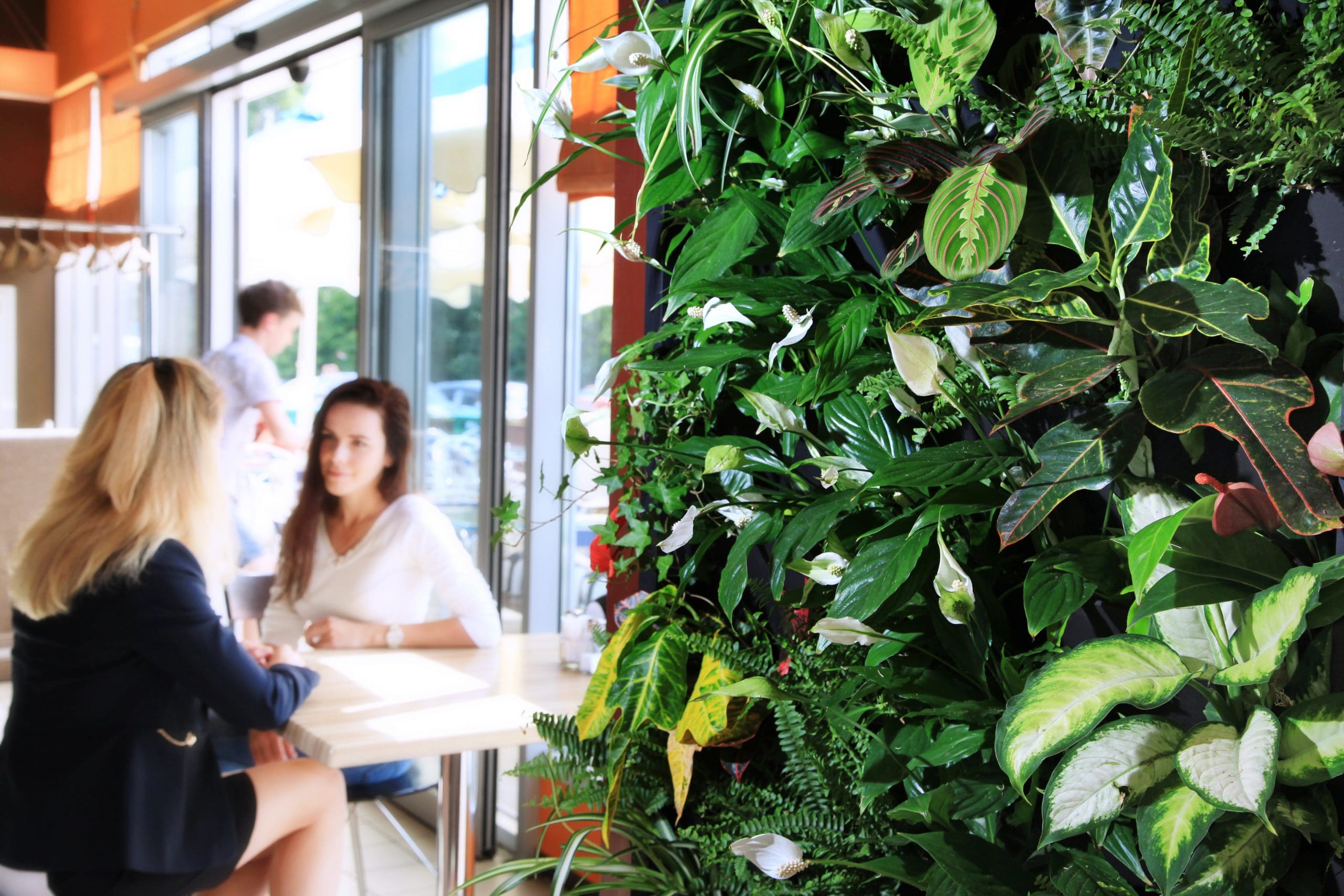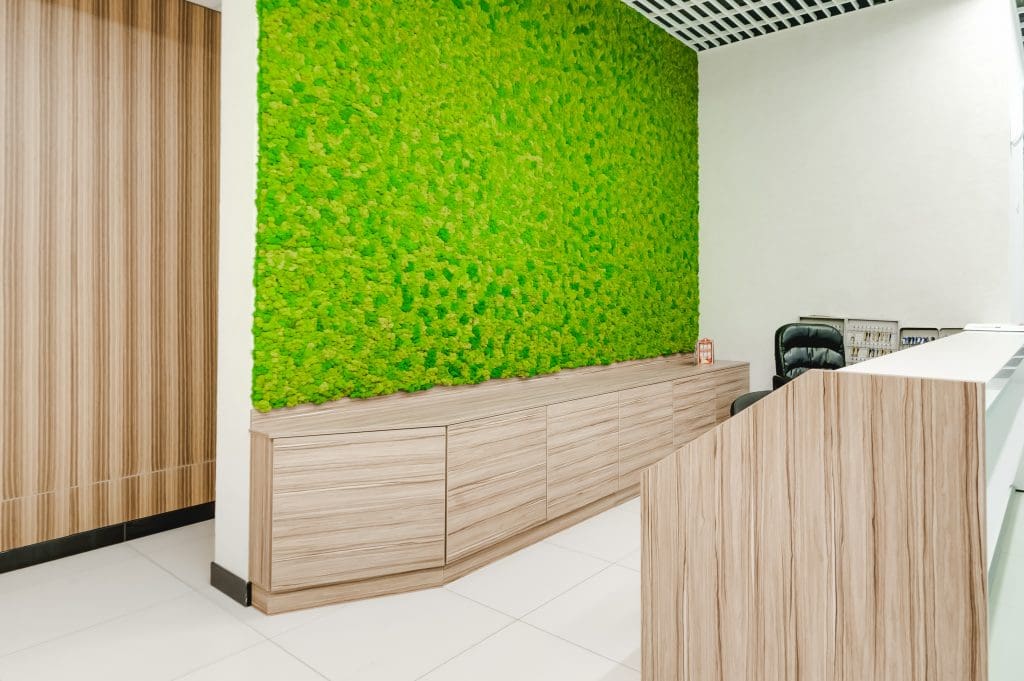
With horizontal space being at a premium, it can be challenging to incorporate greenery into certain interior areas. However, green walls provide a bounty of benefits, including a connection with nature, sound absorption and energy efficiency.
If you have interior plantscaping clients looking for a green wall for their space, they may not be aware that there are a number of options when it comes to creating a green wall.
Two main choices you need to break down for your client is whether they want a living wall or a moss wall. Each has their own set of features and benefits. Highlighting the differences will help customers decide which is the best fit for their location.
Living Wall Features
Living walls are comprised of real, living plants that require soil, sunlight, and watering. Discuss with your client where they are wanting this wall installed as the available lighting can be a determining factor on if a living wall is the best option. Lighting systems can be installed to remedy this, but also raises their budget.

There are numerous design options for living walls and they can provide a striking feature to your client’s office space. Living walls tend to have more color options than moss walls.
These types of walls will grow and change as the plants mature. Depending on the installation system you use, the plant design can even be interchanged with different planters. Living walls can be connected to a supporting structure or exist as a free-standing wall. Because the plants are alive, these structures will require regular care such as pruning, fertilizing, watering (if there is no irrigation system installed) and checks for pests and diseases.
Living walls are ideal for those clients who are looking for a wow factor for their employees and/or guests. They are also best suited for companies that have the infrastructure and budget to afford the installation and necessary maintenance to keep the green wall looking its best.
Preserved Moss Wall Features
Moss walls are preserved with natural glycerin to give them the appearance of being alive, but they are actually static. This doesn’t prevent clients from reaping the benefits of biophilic design though.
Unlike living walls, which can also be installed on the exterior of buildings, moss walls are best kept inside. It is also best to keep moss walls out of direct sunlight.

Placement again will help determine if a moss wall is good fit. They should not be installed close to AC or heating vents, and if they are placed in high traffic areas, signage may be needed to prevent people from touching the moss frequently.
As far as maintenance, moss walls only need to be misted with water if the humidity drops and dusted on occasion. If kept in an ideal location, moss walls can last three to five years.
Because moss doesn’t require soil, moss walls are much more lightweight than living walls.
Preserved moss walls are a good choice for clients who are looking for a green wall but may not have the budget for regular maintenance or spaces where a living wall could thrive.
Regardless of which type of green wall your client chooses, adding one of these features to their space provides advantages such as:
- Cleaner air by removing VOCs
- Reduced noise
- Reduced absenteeism in the workplace
- Boosted employee morale and creativity
- LEED certification points

